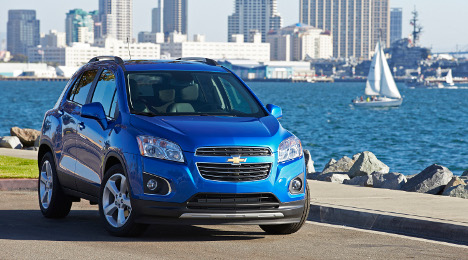In Hot Crossover Class, A New Segment Debuts

2015 Chevrolet Trax LTZ. Photo copyright General Motors
By subscribing, you agree to receive communications from Auto Remarketing and our partners in accordance with our Privacy Policy. We may share your information with select partners and sponsors who may contact you about their products and services. You may unsubscribe at any time.
GAINESVILLE, Ga. –
To put the crossover vehicle boom in perspective, consider new-car registration data shared recently shared by Black Book’s Anil Goyal in an April interview with Auto Remarketing.
Over the past decade, there has been a 400-percent increase in the number of new crossovers registered, compared to a 25-percent decrease in midsize cars and a 33-percent decrease in full-size cars.
Not only are there more automakers producing crossovers, but many are also going with increasingly smaller versions, said Goyal, who is the company’s vice president of automotive valuation and analytics.
In fact, Black Book had found that there are dozens of models within the compact crossover category itself. And now, Black Book has created another category within this segment: subcompact crossovers, which appear to be generating the same kind of strong consumer demand that crossovers, in general, have been generating.
In discussions with OEMs about how they are competing in the crossover segment, “it became apparent to us that we should create a separate category to help (the industry) understand that particular segment differently. Because when we looked at the subcompact crossover, they seemed to be more targeted in between the compact cars and midsize cars, still providing that perception of a bigger car,” Goyal said.
He added: “Americans love to drive big cars. Although it’s not big in footprint, it still has that height, which provides that bigger car functionality, as well as perception.”
Subscribe to Auto Remarketing to stay informed and stay ahead.
By subscribing, you agree to receive communications from Auto Remarketing and our partners in accordance with our Privacy Policy. We may share your information with select partners and sponsors who may contact you about their products and services. You may unsubscribe at any time.
Current models in this category include the Buick Encore, Chevrolet Trax, Jeep Renegade and the Fiat500X (for 2016).
Debuting in March, the subcompact crossovers had a combined retention rate of +1.1 percent for that month, trailing only the full-size passenger van segment (+1.5 percent). In April, retention was at +1.7 percent, good for fourth on Black Book’s list.
During the mid-April interview, Auto Remarketing asked Goyal about the March retention rate for these subcompact crossovers and what was impacting it.
It does go back to consumer demand.
The segment is a new category, Goyal said, “where that consumer is really interested in getting a very functional vehicle, but wants more roominess and versatility … which this segment offers. It’s also helped the manufacturers from a CAFE requirement perspective.”
He added: “So, we think that this segment is going to continue to grow, and at some point, of course, we will see that there will be some stabilization and the supply will increase more than the demand, but at this point, we continue to see that more and more consumers are interested in this kind of functional vehicle.”
Interestingly enough, they don’t have the same kind of price volatility in reaction to fuel prices that one might find in hybrids/electrics or pickups and SUVs.
In terms of fuel-efficiency, “they’re kind of in the middle, where they’re somewhere between a midsize car and a compact car,” Goyal said.
“So, there’s not a lot of impact from a fuel-price perspective,” he concluded.


